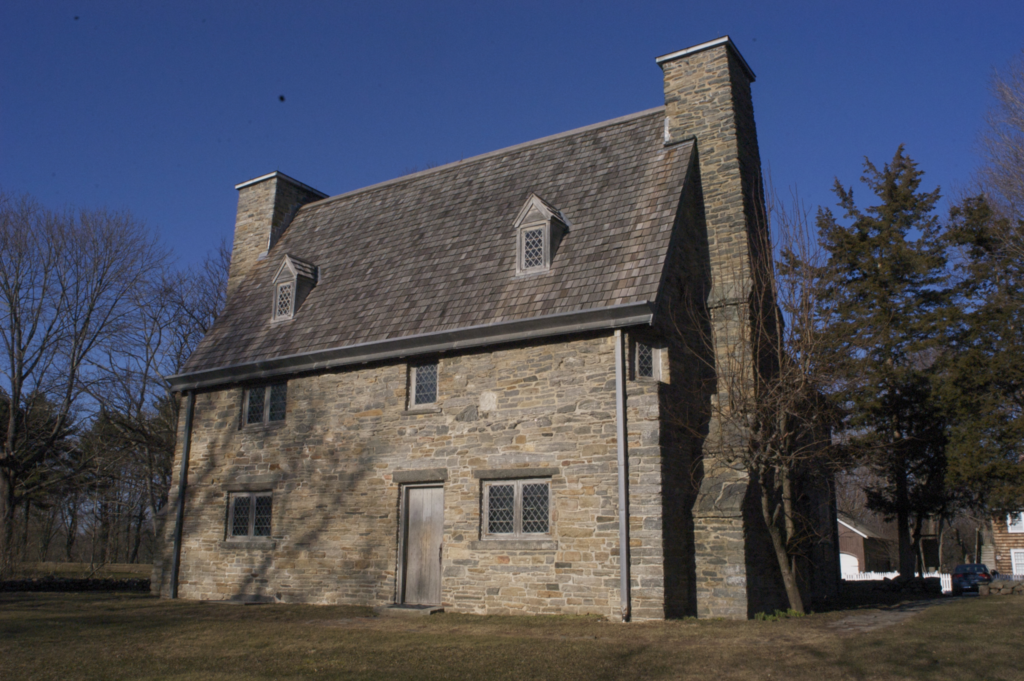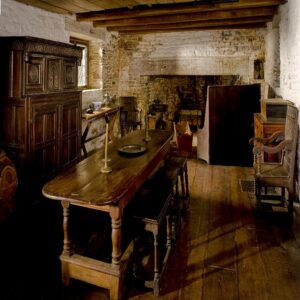By CT Humanities Staff
The Henry Whitfield House (home to the Henry Whitfield State Museum) is not only Connecticut’s oldest house and the oldest stone house in New England, but was also constructed to serve as a protective fort for some of Connecticut’s earliest settlers.
Henry Whitfield became an ordained minister of the Church of England in 1618. By the 1630s, however, Separatists and Puritans found themselves threatened by the increasingly restrictive policies of England’s King Charles I. In response, Whitfield gathered approximately 40 families and emigrated to the southern shores of (what later became) Connecticut. After consulting with his friends George Fenwick (who helped found the Saybrook Colony) and Reverend John Davenport (who founded the New Haven Colony), Whitfield and his fellow colonists purchased land from the Menuncatuck (or Menunkatuck) people and founded what is now Guilford, Connecticut. He served as Guilford’s first minister and an important community leader for 12 years.
Construction of the Henry Whitfield House began in 1639 and was probably completed the following year. Whitfield lived there with his wife, Dorothy, and five to seven (of their nine) children until 1650/1651, when most of the family returned to England following the execution of King Charles I and the establishment of Puritan leader Oliver Cromwell as Lord Protector. Once back in England, Whitfield led a parish in the Winchester Diocese until his death in 1657.
The Henry Whitfield House went through several owners and renovations over the next centuries before becoming Connecticut’s first state museum in 1900. At different points during the early 20th century, architects Norman Isham and J. Frederick Kelly restored the house, largely based on Colonial Revival historic preservation practices. According to the Henry Whitfield State Museum, the house “is a physical reminder of the European settler colonialism of the 1600s, as well as the Colonial Revival era of the 1800s-1900s that celebrated and glorified European ethnocentricity and superiority.” Today, it is also a National Historic Landmark and State Archaeological Preserve.
This article was adapted from CT Humanities’ ConnTours Project.










